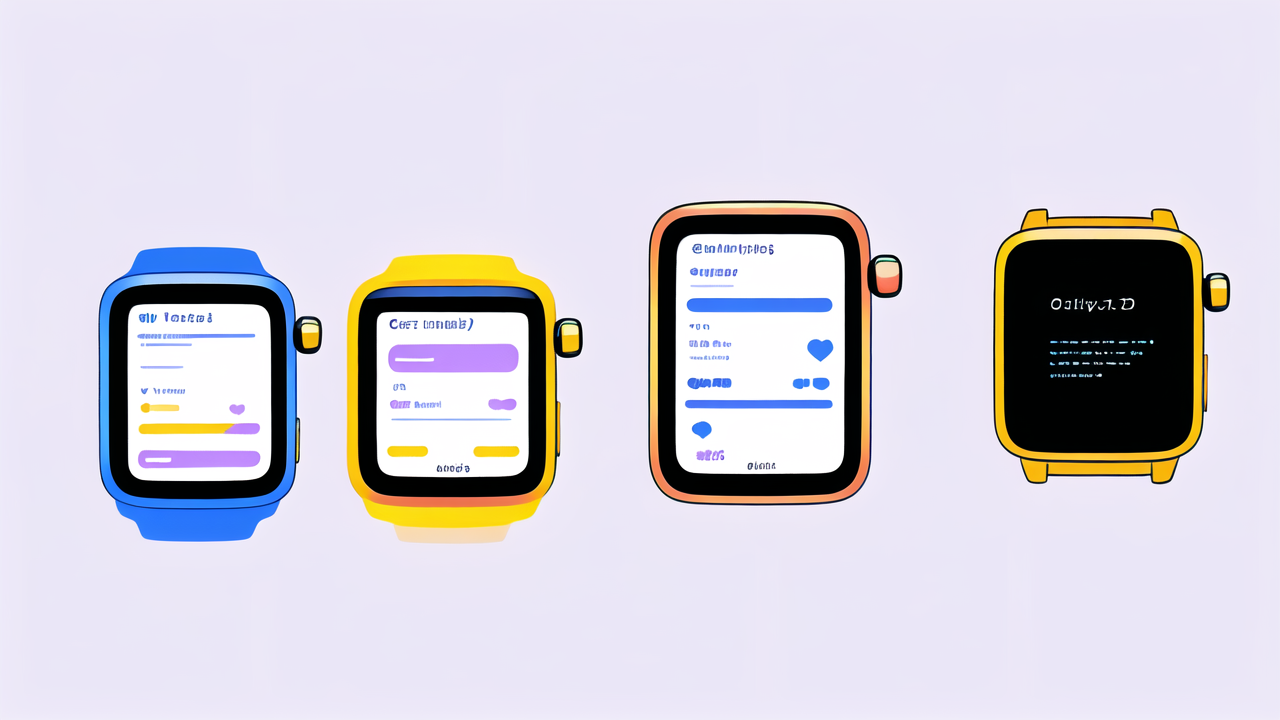Introduction to Smart Watches in the United States
The Evolution of Smart Watches
Smart watches have come a long way since their inception. They started as simple digital watches. Now, they're mini-computers on our wrists. The first models were basic. They showed time and had a few extra features.

Today's smart watches are powerful devices. They can track health, make calls, and even pay for groceries. The evolution has been rapid. Each year brings new features and improvements. Brands like Apple, Samsung, and Fitbit lead the charge.
The US market has embraced smart watches. They're no longer just for tech enthusiasts. People of all ages use them daily. The evolution continues as companies innovate. We can expect even more advanced features in the future.
Key Features of Top-Selling Smartwatches
Top-selling smart watches share some key features. These make them popular among consumers. Here's what to look for:
- Health tracking: Heart rate, sleep, and activity monitoring
- Fitness features: GPS, workout modes, and calorie counting
- Notifications: Calls, texts, and app alerts
- Battery life: Long-lasting power for daily use
- Water resistance: Suitable for swimming and showering
- Customization: Changeable watch faces and bands
Smart watches also offer voice assistants. You can control your smart home or set reminders. Some have built-in cellular connectivity. This lets you leave your phone at home.
The best devices balance these features with ease of use. They're intuitive and responsive. As technology improves, so do these key features. Choosing the right one depends on your needs.
Evaluating Smart Watches for Different User Needs
Fitness Enthusiasts and Health Conscious Consumers
Fitness buffs and health-focused users have specific needs. They want accurate tracking and motivation. The best smart watches for them offer:

- Detailed workout stats
- Heart rate variability
- Sleep quality analysis
- Stress level monitoring
- Blood oxygen measurement
Some watches can even detect falls or irregular heart rhythms. This is great for safety-conscious users. Brands like Garmin and Fitbit excel here. They offer in-depth fitness features.
For runners, GPS accuracy is crucial. Swimmers need water resistance. Yogis might prefer stress tracking. The right watch depends on your favorite activities. Look for devices with long battery life for extended workouts.
Professionals and Productivity Boosters
Busy professionals need smart watches that keep them connected. These watches should blend into work life seamlessly. Key features include:
- Email and calendar notifications
- Voice-to-text replies
- Meeting reminders
- To-do list management
- Contactless payments
Some watches let you take calls directly. This is handy in meetings or while commuting. The Apple Watch and Samsung Galaxy Watch are popular choices. They integrate well with smartphones.
Battery life is crucial for day-long use. Look for watches that last at least a full workday. Some offer power-saving modes for extended use. Choose a watch that matches your work style and needs.
Style and Fashion-Forward Users
Style-conscious users want more than just function. They need a watch that looks good too. Fashion-forward smart watches offer:
- Sleek, attractive designs
- Customizable watch faces
- Interchangeable bands
- High-resolution displays
- Premium materials like stainless steel or ceramic
Brands like Fossil and Michael Kors blend tech with fashion. They offer smart watches that look like traditional timepieces. Apple also caters to this market with its designer collaborations.
Consider how the watch looks with different outfits. Some users prefer round faces, others square. The size matters too. Smaller wrists might need compact designs. Choose a watch that fits your personal style.
Decision-Making Process for Smart Watch Purchasers
Understanding Price Points and Specifications
Smart watch prices vary widely. You can find options from $50 to over $1000. Here's a general breakdown:

- Budget ($50-$150): Basic features, plastic builds
- Mid-range ($150-$300): Good balance of features and quality
- High-end ($300+): Premium materials, advanced features
Consider what you're willing to spend. Then look at specs within that range. Key specs to compare:
- Display type and size
- Battery life
- Operating system
- Sensors (heart rate, GPS, etc.)
- Storage capacity
- Processor speed
More expensive doesn't always mean better. Think about which features matter most to you. Sometimes, a mid-range option has everything you need. Don't overpay for features you won't use.
The Role of User Reviews and Ratings
User reviews are valuable when choosing a smart watch. They offer real-world insights. Here's how to use them effectively:
- Read a mix of positive and negative reviews
- Look for comments on long-term use
- Pay attention to mentions of customer support
- Check for recurring issues across multiple reviews
- Consider reviews from users with similar needs to yours
Don't just look at star ratings. Read the detailed comments. They often reveal pros and cons not listed in specs. Look for reviews on multiple sites. This gives a more balanced view.
Remember, everyone's experience is different. What works for one person may not work for you. Use reviews as a guide, not a final decision-maker.
Future-Proofing Your Smart Watch Investment
Smart watches evolve quickly. To future-proof your purchase, consider these factors:
- Operating system updates: Choose brands known for long-term support
- Battery replacements: Some watches allow this, extending lifespan
- Compatibility with future phones: Ensure cross-platform support
- Expandable features: Look for watches that can add new apps or functions
Think about how long you want to keep the watch. Will it still meet your needs in 2-3 years? Some brands offer trade-in programs. This can help when upgrading in the future.
Consider the ecosystem too. If you're invested in Apple products, an Apple Watch makes sense. Android users might prefer Wear OS watches. Choose a watch that fits your long-term tech plans.
Remember, no smart watch is truly future-proof. Technology changes fast. But choosing wisely can ensure your watch stays useful for longer. Balance current needs with potential future features.
In conclusion, choosing the right smart watch involves careful consideration. Think about your lifestyle, budget, and future needs. With the right choice, your smart watch can be a valuable daily companion.




Leave a comment
This site is protected by hCaptcha and the hCaptcha Privacy Policy and Terms of Service apply.